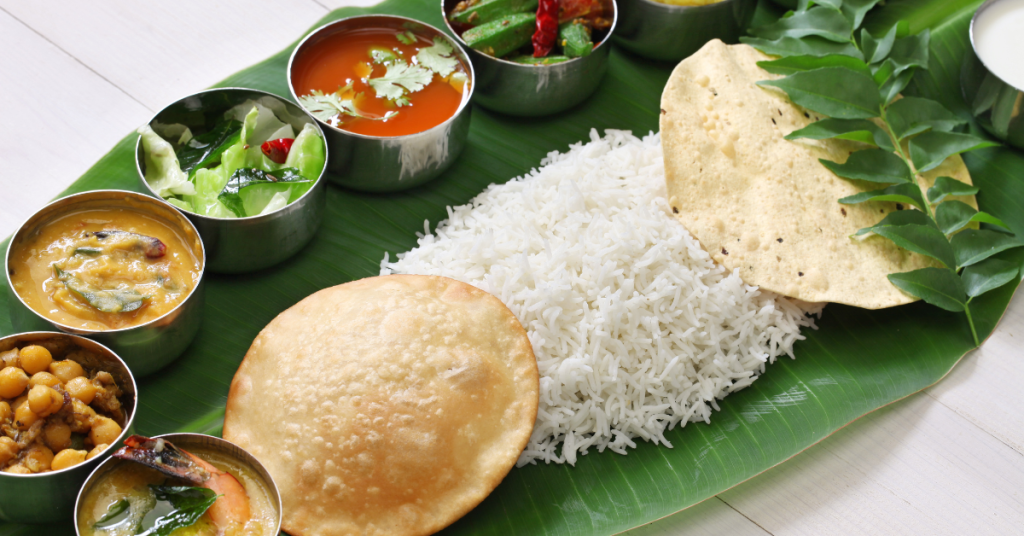As the pursuit of a healthier lifestyle gains momentum, so does the appreciation for the nutritious and wholesome offerings of Indian cuisine. Dining at an Indian restaurant isn’t just a treat for the taste buds; it’s a boon for your well-being. This article delves into the health benefits of dining at an Indian restaurant. We will explore the nutritional advantages, wholesome ingredients, and mindful eating practices that have made Indian cuisine a smart choice for the health-conscious diner.
Nutrient-Rich Choices: A Balanced Dining Experience
Indian cuisine is a treasure trove of nutrients, offering a diverse and balanced array of dishes that can benefit your health. Traditional Indian meals typically consist of multiple components, including rice or bread, vegetables, legumes, dairy or plant-based proteins, and a variety of spices. This balanced approach ensures that you receive a wide range of vitamins, minerals, and dietary fiber in a single meal. For instance, the inclusion of vegetables such as spinach, okra, and eggplant provides essential vitamins and antioxidants. Lentils and legumes offer a healthy dose of protein and dietary fiber, aiding in digestion and promoting fullness. The use of whole grains like brown rice or whole wheat flour provides complex carbohydrates that release energy slowly, maintaining a steady blood sugar level.
Wholesome Ingredients: Nature’s Bounty on Your Plate
One of the distinguishing features of Indian cuisine is the use of wholesome ingredients. Whole grains, legumes, fresh vegetables, and aromatic spices are the foundation of many Indian dishes. These ingredients are not only nutritious but also contribute to overall well-being.
Culinary Medicine: The Healing Power of Spices
Spices are a fundamental component of Indian cuisine, and they are not just for flavor; they offer medicinal benefits too. The therapeutic properties of spices have been recognized for centuries and are integral to Indian cooking. For example, turmeric contains curcumin, a powerful anti-inflammatory and antioxidant compound that may help reduce the risk of chronic diseases. Cumin aids in digestion and can alleviate digestive discomfort. Ginger is known for its anti-nausea and anti-inflammatory properties. By incorporating these spices into your diet, Indian cuisine can act as a form of culinary medicine, promoting overall well-being.
Mindful Eating: Satiety and Portion Control
Indian dining encourages mindful eating practices. The concept of satiety, which is feeling comfortably full but not overly stuffed, is an essential part of Indian meals. The balance of flavors and textures, from the spiciness of curries to the crunch of fresh vegetables, contributes to portion control and a healthier relationship with food. Additionally, the ritual of eating with your hands, which is common in many Indian cultures, promotes a connection with the food you consume. This tactile experience can lead to a heightened awareness of fullness, making it easier to avoid overeating.
Vegan and Vegetarian Options: Nutrient-Packed Delights
Indian cuisine is a paradise for vegans and vegetarians, offering a wide range of plant-based options that are both nutritious and delicious. Dishes like dal (lentil soup), chana masala (chickpea curry), and baingan bharta (roasted eggplant) are packed with protein, fiber, and essential nutrients. These plant-based options not only cater to dietary preferences but also align with the principles of a health-conscious lifestyle. The absence of animal products in many Indian dishes can reduce saturated fat and cholesterol intake, contributing to heart health and overall well-being.
Cultural Well-Being: The Social Aspect of Dining
Beyond the nutritional benefits, dining at an Indian restaurant offers a cultural and social experience that can contribute to emotional well-being. Indian meals are often communal, emphasizing the importance of sharing and togetherness. This social aspect of dining can promote positive mental health by fostering a sense of belonging and connection. Dining at an Indian restaurant offers a holistic approach to health. With nutrient-rich choices, the use of wholesome ingredients, the healing power of spices, mindful eating practices, and vegan and vegetarian options, Indian cuisine has much to offer the health-conscious diner. It’s not just a meal; it’s a journey to wellness.

